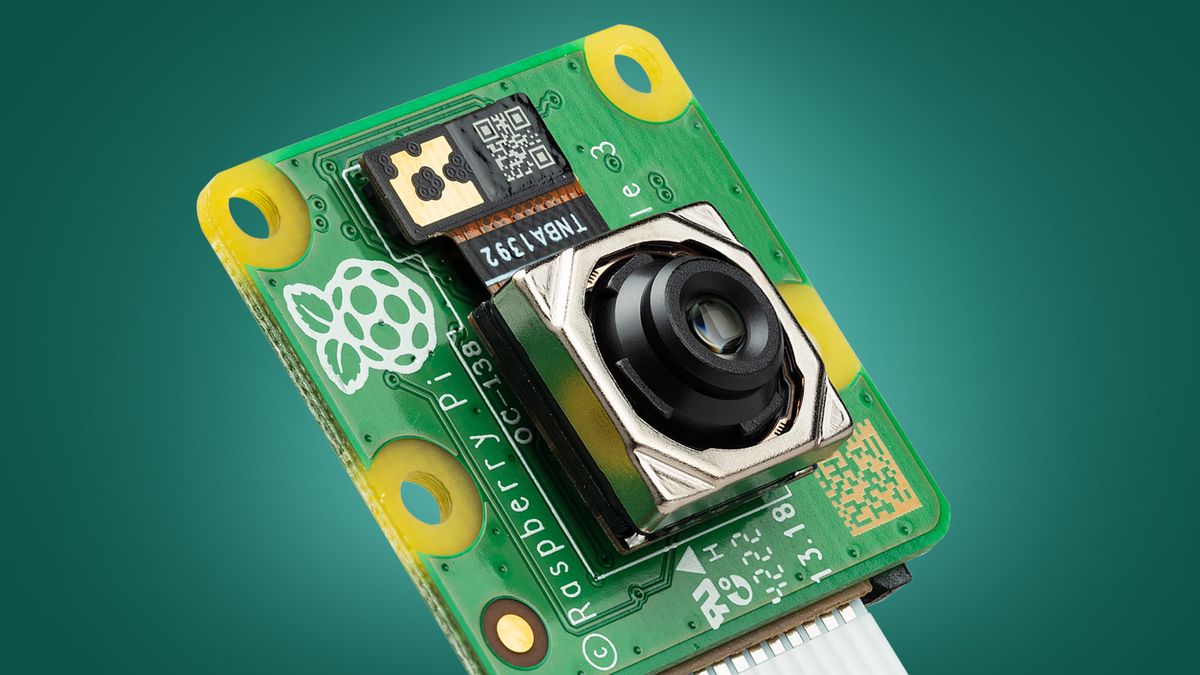I threatened to start one Raspberry Pi Project since buying one of the small computers during the original lockdown. While those plans never materialized, Raspberry Pi’s new Camera Module 3 might just be the spark to reignite my DIY camera fire.
Raspberry Pi has made camera modules before – in fact, the first in 2013 was the company’s first official accessory. So why could his third module be the one that convinces me to complete a project? Because it’s actually a modern digital camera with autofocus and HDR capabilities. And it could be the heart of a personalized digicam that I would actually use instead of admiring it on a shelf.
The Camera Module 3 is based on Sony’s IMX708 sensor, which is the same as the one in the OppoFind X2 smartphone. You won’t get this phone’s image processing pipeline, but this is modern hardware – and it’s the first official Raspberry Pi camera accessory to feature autofocus.
Yes, we’ve seen AF sensors from third-party accessories like Arducam’s 64MP autofocus camera, but not for the Camera Module 3’s impressively low price. The standard is just $25/£26, but you can get a wide one too Buy -Angle version (with a 102-degree field of view compared to the standard model’s 66-degree FOV) for $35/£36. The latter could be ideal for a homemade webcam.
The autofocus looks impressively snappy from the early demos (see below). That’s because it uses phase-detection autofocus (PDAF), with contrast-detection AF (usually better for static subjects) providing handy assistance. It would have been quite embarrassing for Panasonic if Raspberry Pi had managed to develop a phase-detection AF camera. Luckily last week Panasonic Lumix S5II meant the camera giant got there just in time.
The Camera Module 3 improvements aren’t just related to autofocus – the overall image quality should be pretty solid and certainly better than the 90’s digicams that have become amazingly popular again. The IMX708 not only has a resolution of 12 MP (apparently pixel binning of 48 MP), but also larger 1.40 μm pixels than its predecessor. You can also record HD video using the full sensor area.
Even capturing HDR (high dynamic range) images is possible if you’re willing to drop down to 3MP resolution. This is because the camera module 3 takes simultaneous exposures with different exposure times in difficult lighting conditions and then applies tone mapping to achieve a better exposed result.
So this is the brains of my camera project. The Camera Module 3 is compatible with all Raspberry Pis except the Pi 400 or the original 2016 Pi Zero, meaning I can repurpose my Pi 4 Model B – optimistically bought with a HyperPixel screen – to create the centerpiece of my Sonos Album Art -Displays – to build a snazzy new digital camera. Now it’s time to finish the camera body…
Return of the digicam
The downside to the Camera Module 3’s increased sensor size (it’s a 1/2.43-inch chip compared to its predecessor’s 1/4-inch sensor) is that many current packages aren’t compatible with it. For example, it doesn’t work with the camera lid on the Raspberry Pi Zero Case.
Still, there are certainly new cases in the pipeline – I’d love to see an equivalent of that Pi HQ camera bag (opens in new tab). And I could still be seduced into the ultimate project; Building a personalized camera around Module 3. There are some 3D printer friendly designs, such as picon camera (opens in new tab)and of course a YouTuber named Jeff Geerling (opens in new tab) has already modified it to work with the new Module 3.
However, the project involves 3D printing, soldering, and a boatload of patience that might be too much for me at this time of year. So I’ll probably wait and wait for a pre-made case to arrive (maybe some version of the Naturebytes trail camera bag (opens in new tab) for a wildlife camera) before turning to the interface puzzle.

There are several ways to control the camera module 3 including the Picamera2 beta which is part of Raspberry Pi OS Bullseye. The latest version has autofocus support, but it’ll undoubtedly do some tinkering (and scrolling through Raspberry Pis Camera Software Guide (opens in new tab)) to get the camera working.
For me, it’s the Module 3’s autofocus and HDR capabilities that give it the edge over the Raspberry Pi’s other recent announcement: the new High Quality Camera module. This now supports M12 mount lenses alongside the C mount lenses that worked natively with the previous version.
Unfortunately, as appealing as it is to build my own interchangeable lens camera, this module relies on the same camera hardware as before, with no autofocus. So I’ll probably stick with camera module 3 and save 3D printing for another day – if my previous Raspberry Pi projects have taught me anything, it’s to start small before getting carried away with big ideas.





